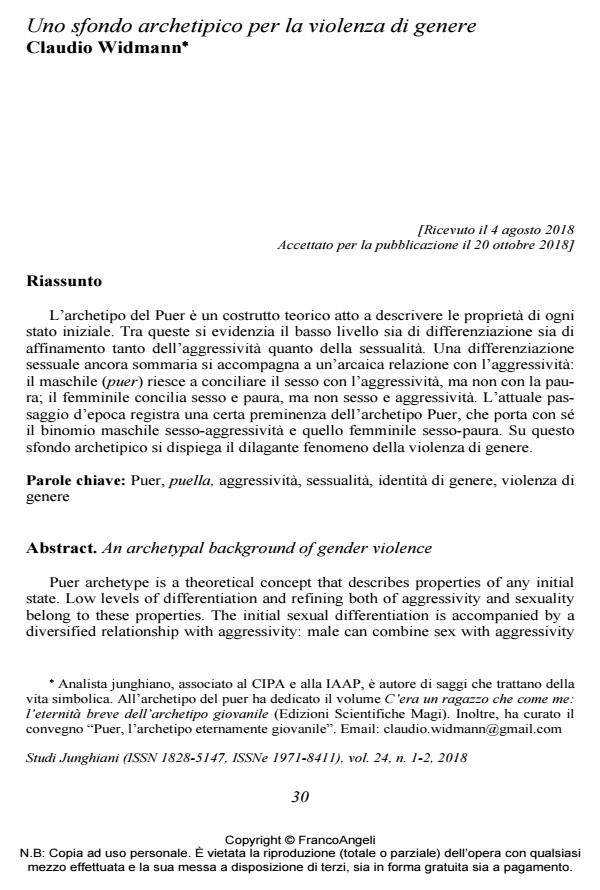An archetypal background of gender violence
Journal title STUDI JUNGHIANI
Author/s Claudio Widmann
Publishing Year 2018 Issue 2018/47-48
Language Italian Pages 17 P. 30-46 File size 199 KB
DOI 10.3280/JUN2018-047003
DOI is like a bar code for intellectual property: to have more infomation
click here
Below, you can see the article first page
If you want to buy this article in PDF format, you can do it, following the instructions to buy download credits

FrancoAngeli is member of Publishers International Linking Association, Inc (PILA), a not-for-profit association which run the CrossRef service enabling links to and from online scholarly content.
Puer archetype is a theoretical concept that describes properties of any initial state. Low levels of differentiation and refining both of aggressivity and sexuality belong to these properties. The initial sexual differentiation is accompanied by a diversified relationship with aggressivity: male can combine sex with aggressivity but not with fear; female can combine sex with fear and not with aggressivity. This involves that men can practice sex with violence but not with fear; women can practice sex feeling fear and not feeling aggressivity. At the present age passage Puer archetype is constellated and through his binomials sex-aggressivity and sex-fear offers an archetypal background to the increasing gender violence.
Keywords: Puer, puella, aggressivity, sexuality, gender identity, gender violence
Claudio Widmann, Uno sfondo archetipico per la violenza di genere in "STUDI JUNGHIANI" 47-48/2018, pp 30-46, DOI: 10.3280/JUN2018-047003